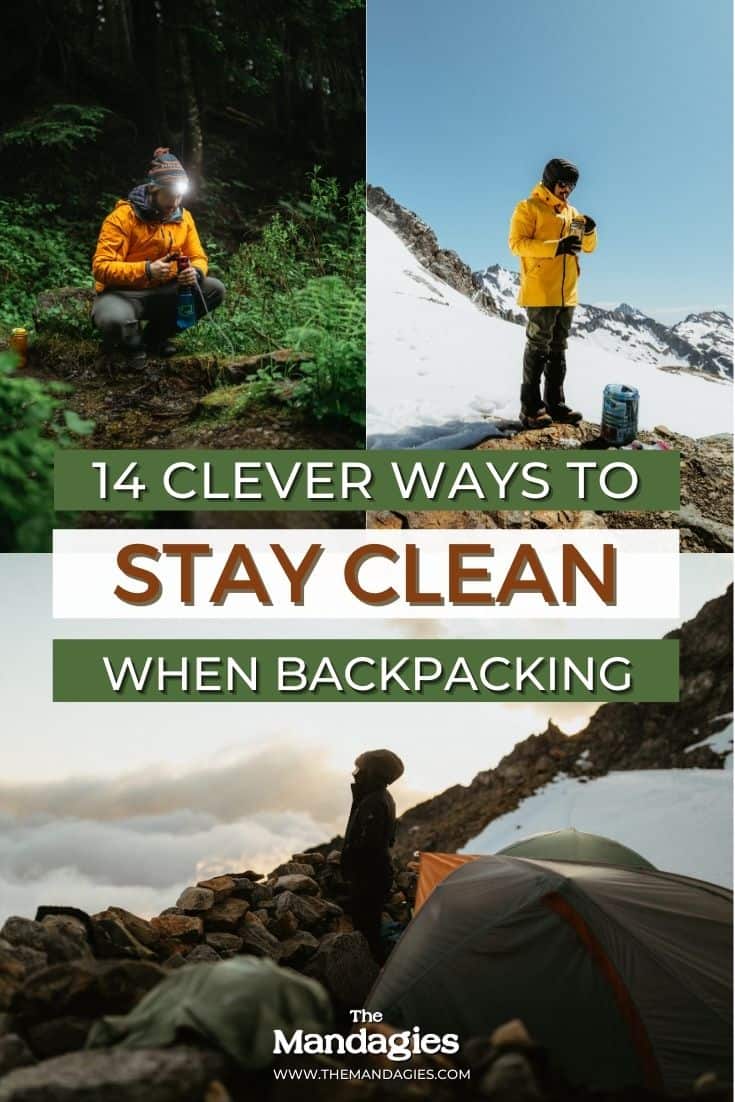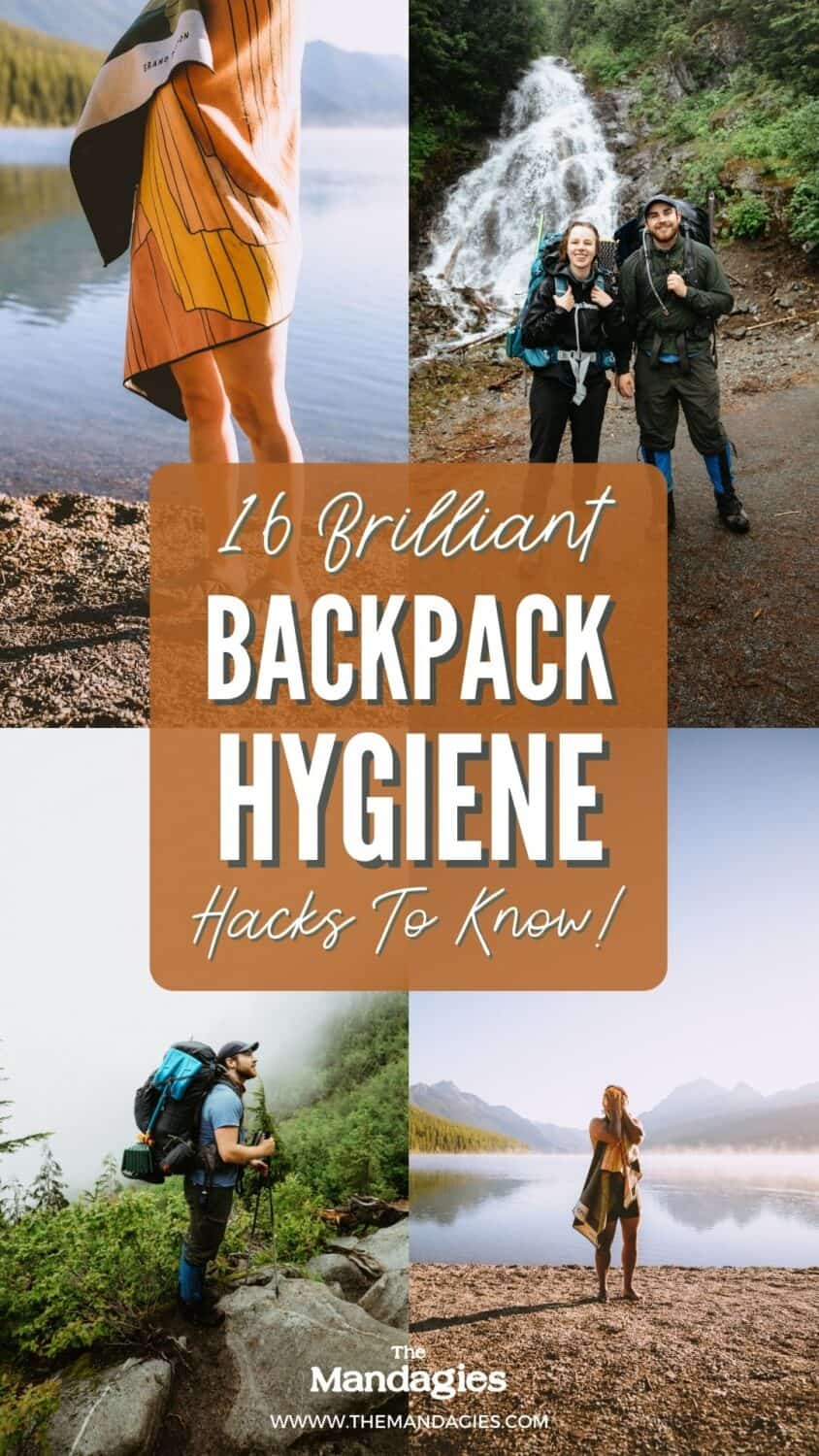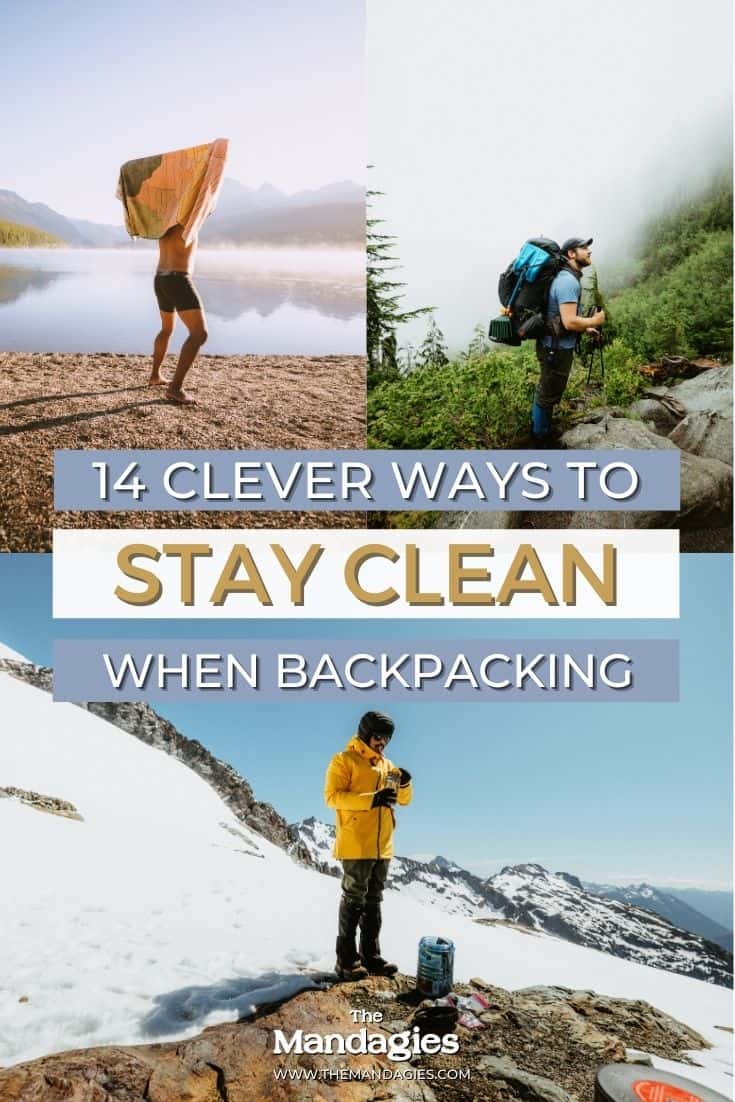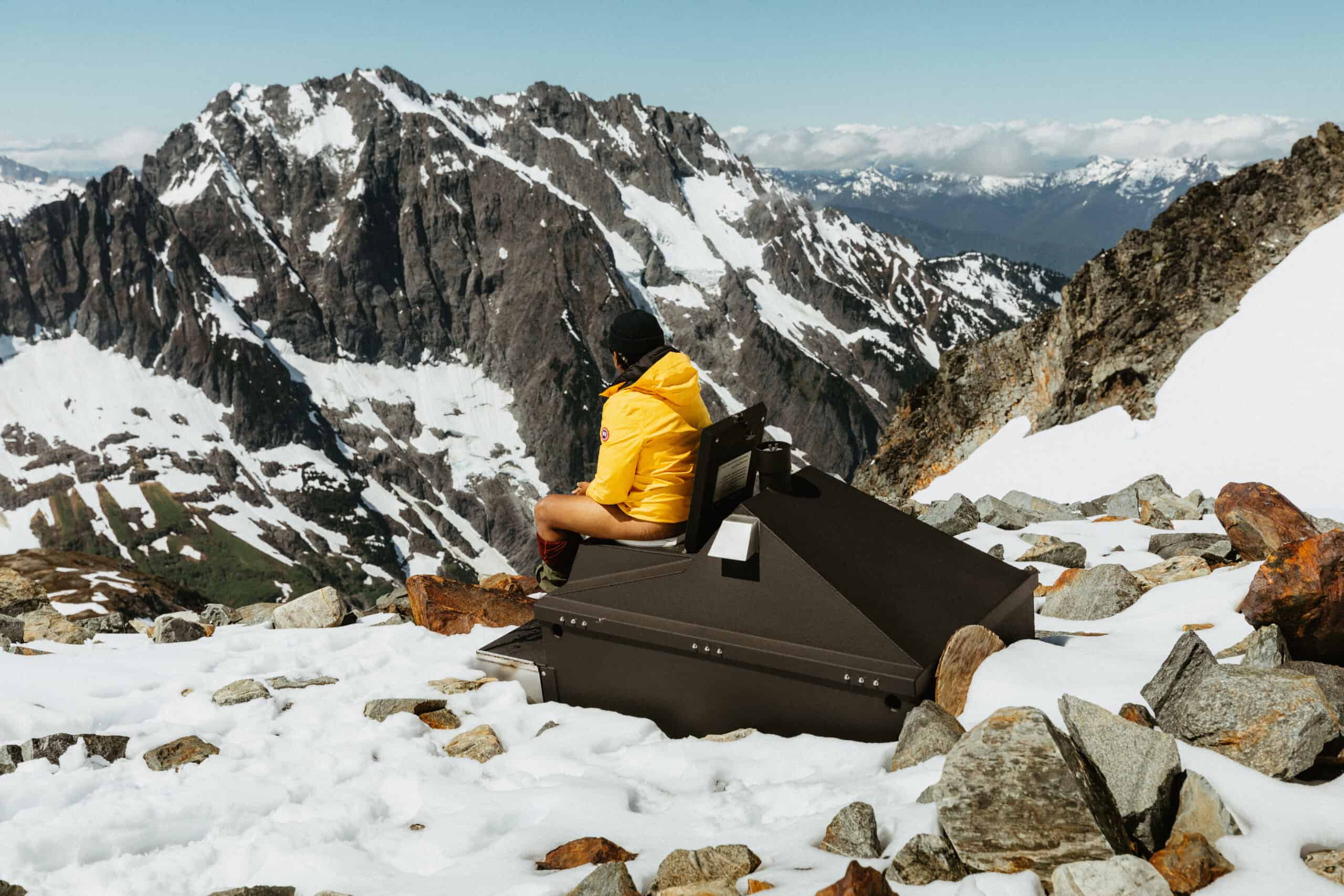Post Summary: Essential Camping Hygiene Tips On Backpacking and Hiking Trips
This post was created by adventure contributor, Whitney Matthews
One of the most intimidating and uncomfortable parts about spending multiple days outdoors is camping hygiene – staying clean while backpacking.
Where do you poop? What if you get smelly and sweaty? How do you wash your hands? How do you shower?
These can be overwhelming questions, especially if you consider yourself more of a beginner in camping and backpacking.
In full honesty, not showering for a few days and having to poop in the woods is going to sound scary (and uncomfortable) until you actually try it and figure out what works best for you.
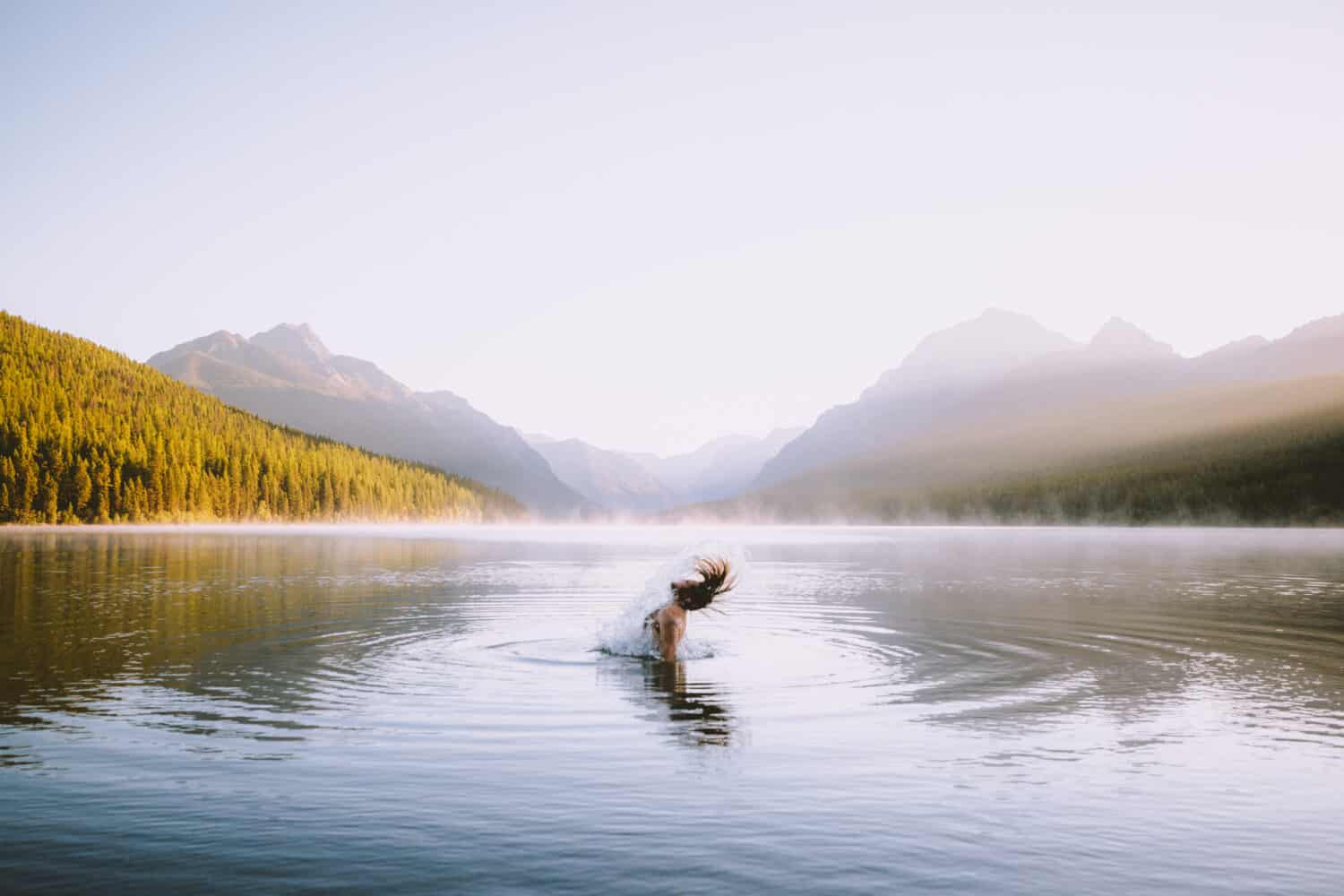
Our goal with this post is to get you as prepared as possible so you can be set up for camping hygiene success when you head out into the backcountry. In this post, you’ll find our best backpacking hygiene tips, personal hygiene essentials, and creative ways to stay as fresh and clean as possible.
Let’s get dirty!
Best Camping Hygiene Products For Men and Women
So, what should you include in your backpack hygiene kit? See our list below, and keep scrolling the rest of the post to read about staying clean while camping!
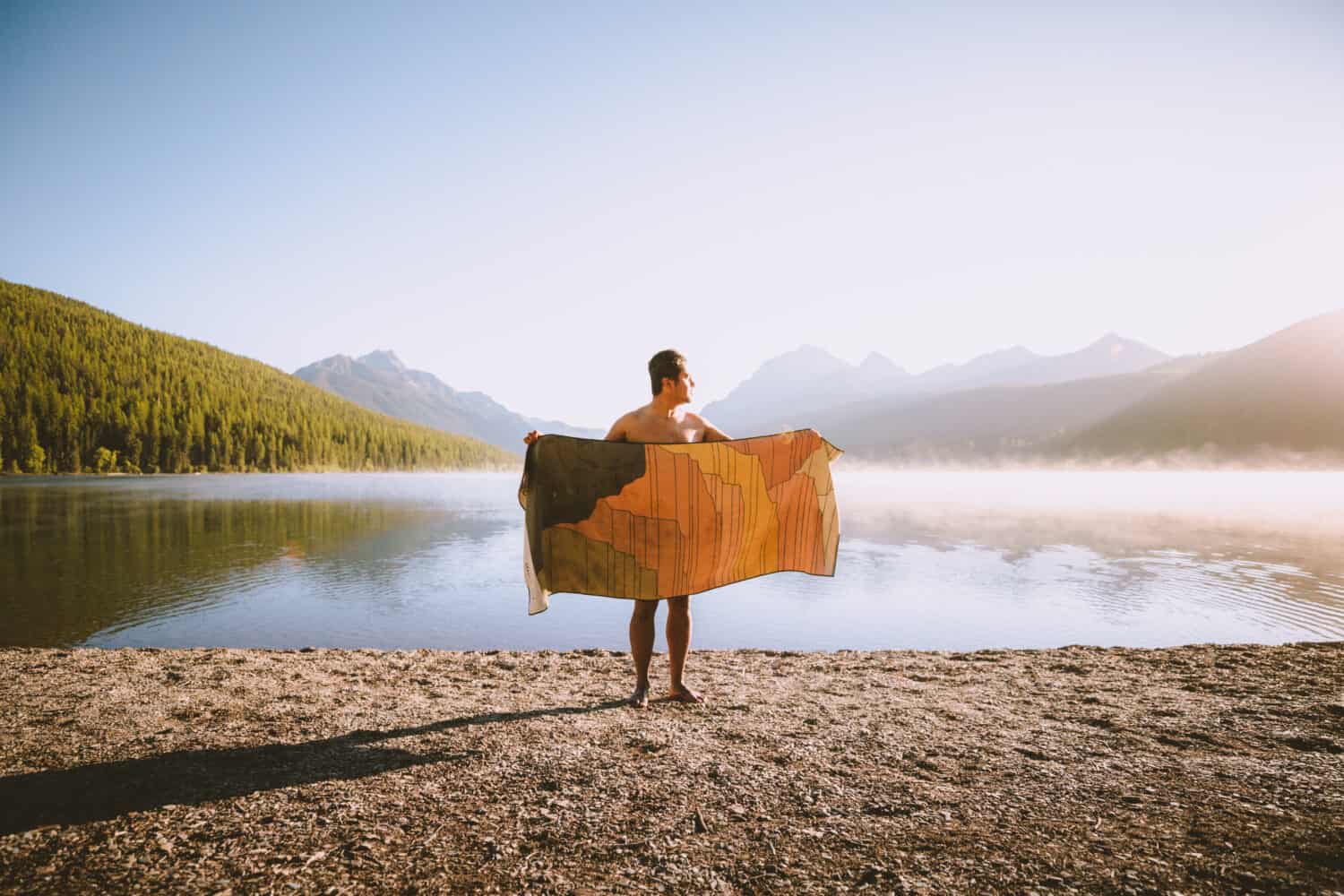
Top Outdoor Hygiene Products for Men
- Extra underwear (and yes, turning them inside-out does count)
- Sunscreen
- Biodegradable wipes or baby wipes (always pack them out!)
- Toothbrush + biodegradable toothpaste
- Small, quick-drying towel
- Toilet paper and it’s own plastic bag (unless you plan to ditch the weight and use leaves, snow, or smooth rocks)
- Hand sanitizer
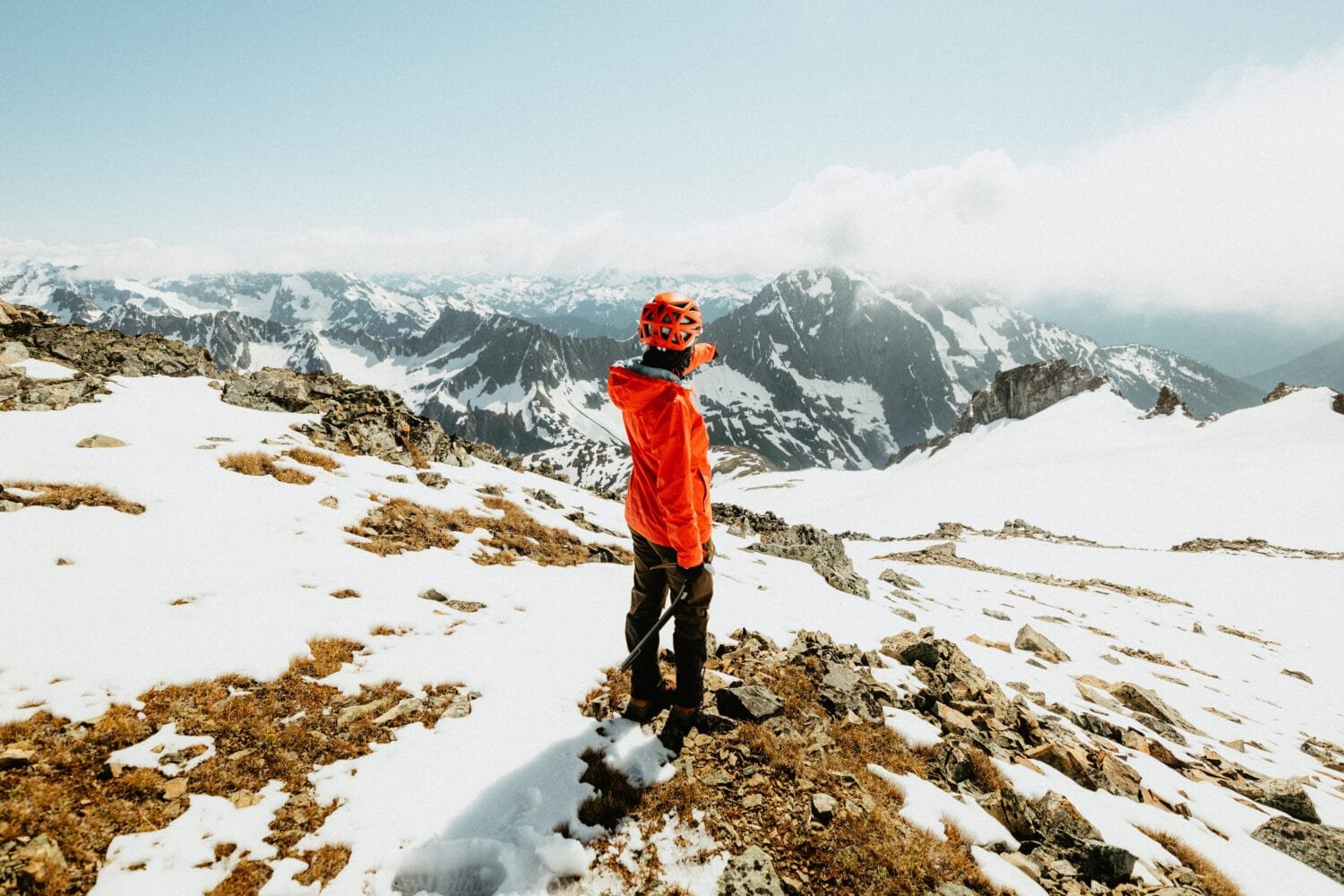
Top Camping Hygiene Products for Women:
- Kula Cloth – an anti-microbial pee cloth and toilet paper replacement. Free version? A bandana
- Thinx underwear – period-proof underwear
- A menstrual cup (be sure to follow Leave No Trace practices for emptying, as you would for relieving yourself, and see Tip #11 for more tips on periods when backpacking!)
- Toothbrush + biodegradable toothpaste
- Face and Body Wipes (our favorites are from Ursa Major)
- Small, quick-drying towel
- Extra underwear (anything but cotton!)
- Sunscreen
- Backpacking toilet paper and a plastic bag to pack it out
- Hand sanitizer
Going on a backpacking trip? You might find these posts helpful, too:
- Best Backpacking Gear For Beginners
- The 57 Best Gifts For Backpackers (for holidays and birthdays)
- The Ultimate Guide To Backyard Camping
- 7 Critical Pacific Northwest Forest Passes You Need To Know
- Our Favorite Camping Meals + Cooking Tools
Best Backpacking Hygiene Tips For Staying Clean While Camping
Now that you have all the items for your personal hygiene, it’s time to figure out how to use them on your trip! Keep scrolling for some of our best backcountry outdoor hygiene tips!
These camping hygiene hacks will keep you smelling fresh (at least as much as possible, LOL), and help you feel as clean as possible on everything from overnight camping trips to week-long backpacking trips.
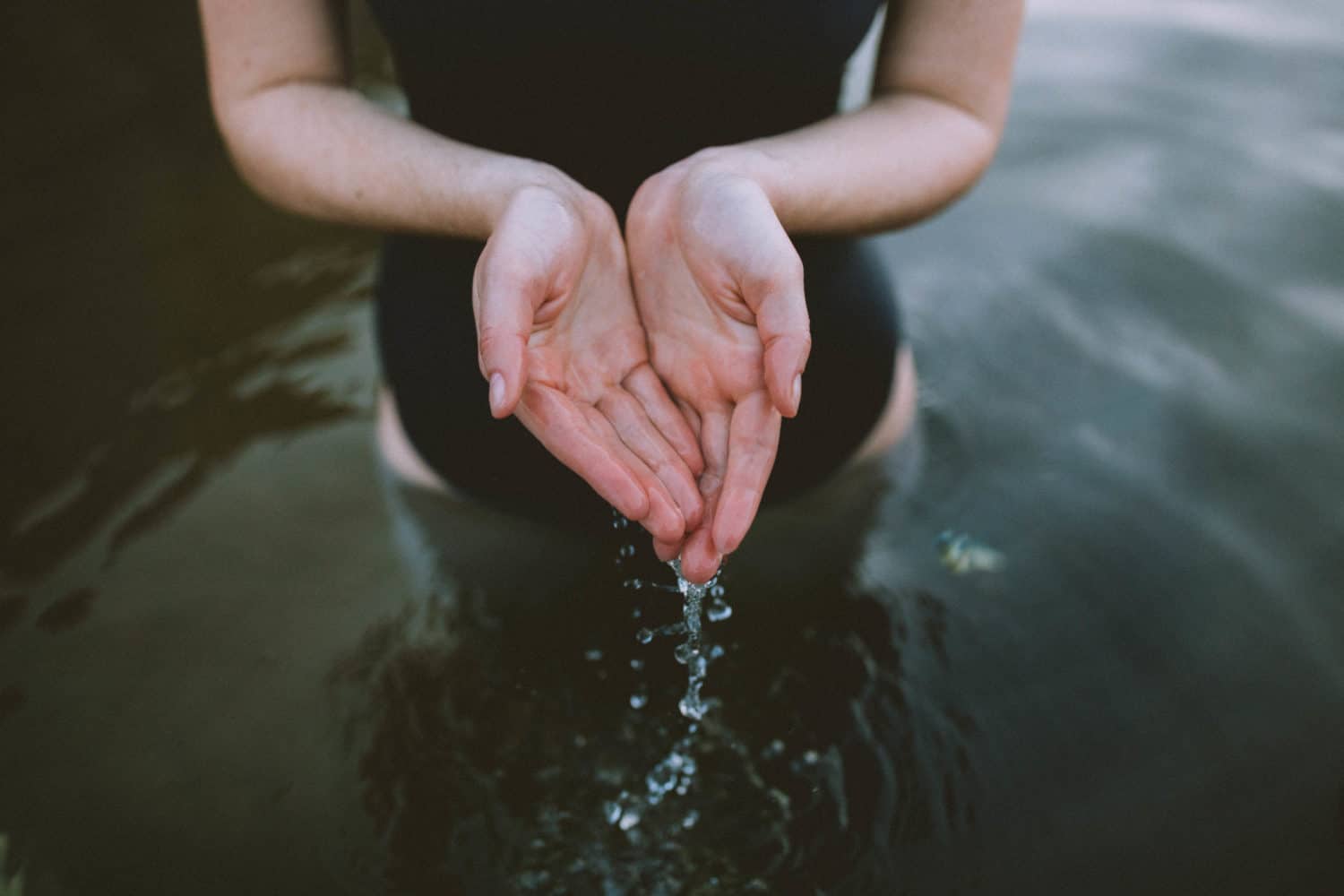
1. Wash Your Hands Often!
The easiest camping hygiene tip is to wash your hands! This easy task will help you to stay healthy and clean in the outdoors.
Practice this by rinsing your hands in water when visibly dirty, and using hand sanitizer to kill any bacteria or pathogens. Hand sanitizer is the easiest and most convenient way to stay clean in the outdoors, especially because it doesn’t require rinsing.
Make sure to use ample hand sanitizer before meals, after you use the bathroom, and before washing your face. This helps prevent bad bacteria (like from animal poop or bugs!) from entering your body and getting you sick.
2. Take A Baby Wipe “Bath”
There are a few different ways to bathe in the backcountry. After multiple days of hiking through the wilderness and re-wearing clothes, it’s only natural to be craving a shower!
The easiest and simplest way to get clean? A sponge bath or wiping yourself down with biodegradable wipes (or baby wipes). This is a quick solution, perfect for a quick refresh at the end of a long hiking day.
Now what to do with the dirty wipes? It’s imperative that you pack them out! If you don’t like seeing gross, used wipes, here’s a quick clean-up solution: a DIY Toss Bag. (Keep scrolling for this next tip!)
Don’t have baby wipes? If you’re in need of something a bit more thorough during your camping hygiene routine, carry water in a small container or basin at least 200 feet away from your camp & any freshwater sources.
From there, use that to bathe with biodegradable soap and wipe yourself down with a washcloth. You can also heat up water beforehand, for a little bit of luxury on your trip.
3. Make a DIY Toss Bag
Okay, we’re asking you to pack out all of these items, but isn’t that gross??
It doesn’t have to be, and we’re showing you how to make your own toss bag. A toss bag is essentially a ziplock bag covered in duct tape, so you don’t have to see its contents. Here’s how to make one:
- Take a ziplock bag and tape the outside with duct tape or any other non-transparent tape.
- Put your toss bag in a larger ziplock bag for extra spill-proof safety and a stronger smell barrier.
- Dispose of used wipes, toilet paper, feminine products, or any other undesirable items to toss later.
- And…voila! You have our own backpacking hygiene toss bag!
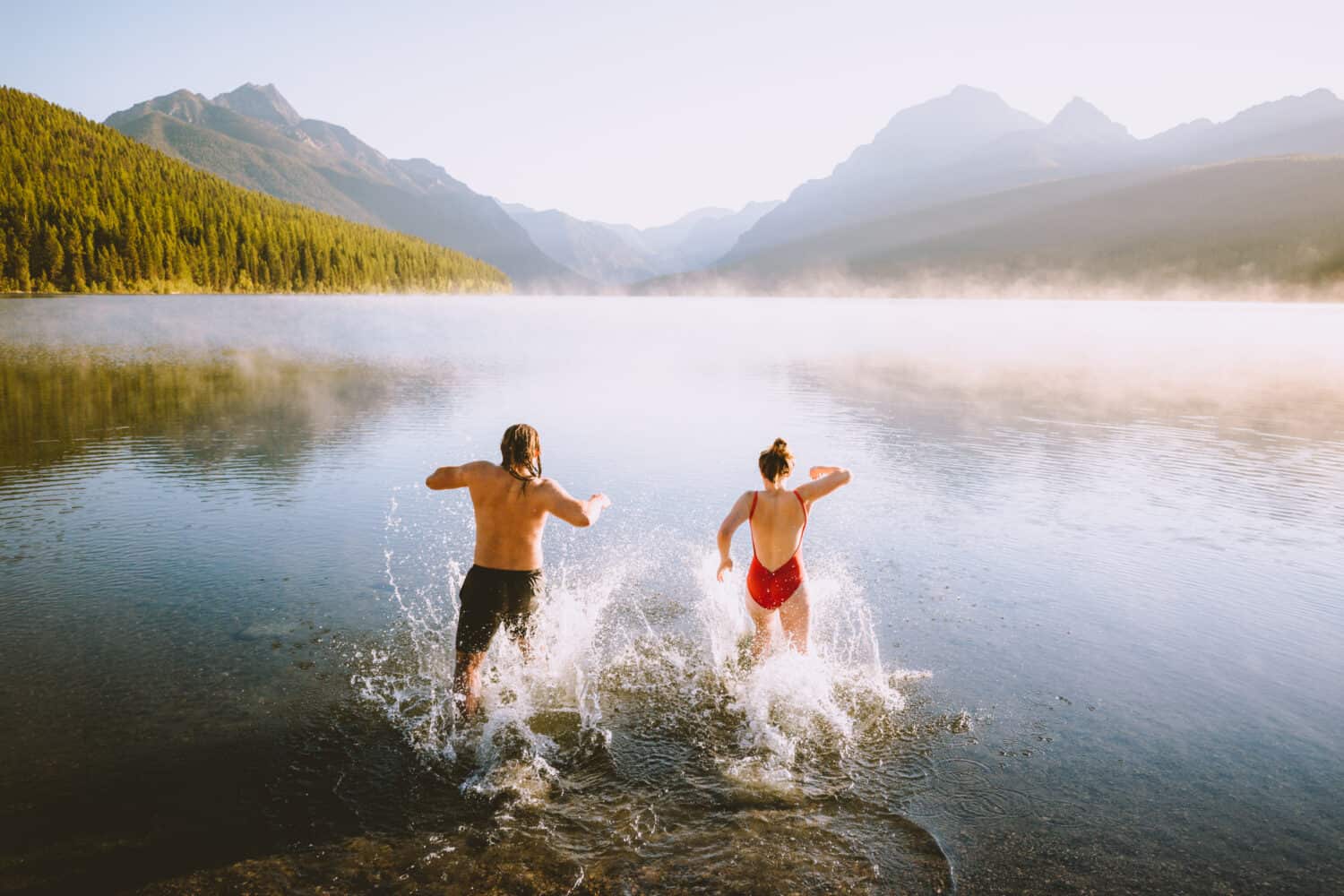
4. Take A Freshwater Shower (And How To Choose The Right Spot)
Feeling like a full-body refresh? If you are around a large lake or river (like the Grand Canyon, Colorado River, or Bowman Lake) an immersive lake dunk is a fun way to feel fresh and clean! It’s also recommended to hop in early in the day, so you have plenty of time to dry off completely before dark.
Before you dive in though, remember that Leave No Trace Principles very much apply to lake jumping, and you have to determine if your lake or river is a good bathing choice.
It is NOT recommended to use small streams or low volume bodies of water for cleaning or outdoor hygiene. These smaller areas may not have adequate flow or a large enough water volume to dilute chemicals & bacteria.
This can be harmful to the plants and animals that depend on that source of water. This caution especially pertains to alpine lakes, which often don’t have a way to drain/dilute their water source, and are very susceptible to contamination. Remember this “go big or go home (and shower)” as far as bodies of water are concerned.
Finally, as tempting as it sounds, do not lather up with soap and shampoo then jump in to clean off. Try and avoid any soaps and chemicals, even biodegradable ones, to leave as little footprint as possible.
Just give yourself a good natural hand scrub and rinse, camping hygiene doesn’t have to be fancy. Save the nice smells for your baby wipe baths!
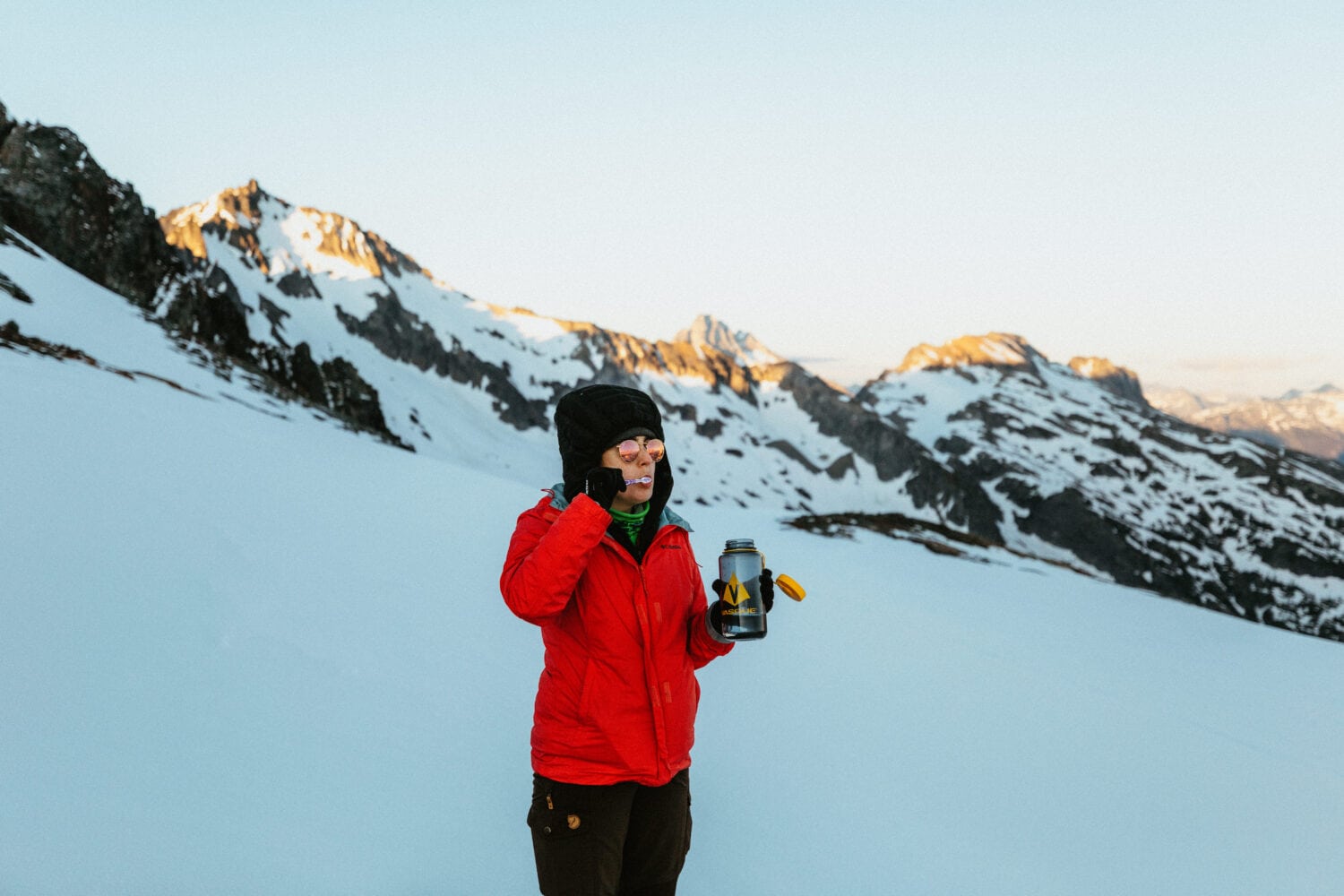
5. Brush Your Teeth In The Outdoors Using the “Surprise” Method
Brushing your teeth is the quickest and easiest way to feel just a little cleaner in the outdoors. We recommend biodegradable toothpaste and your toothbrush, with a lid or case to keep it clean. Tom’s makes a great toothpaste option, created with natural cleaning ingredients for less environmental impact.
Leave No Trace pro tip: Make sure you spit away from freshwater sources. Ideally at least 50 feet away from camp, so any critters that smell it won’t accidentally wander near you at night.
For spitting, we like to use the “surprise” method.
Basically, this means spraying your toothpaste spit as if you’ve heard the most absurd news! This prevents your spit from unnecessarily pooling in any one given place and spreads it out to make as little impact as possible. For even less impact, right before you spit, drink a big gulp of water to dilute the toothpaste (and then you can broadcast it even bigger, too, for your dramatic performance!).
It’s camping hygiene, made fun!
Read More: 25 Campgrounds on the Oregon Coast You Should Book ASAP
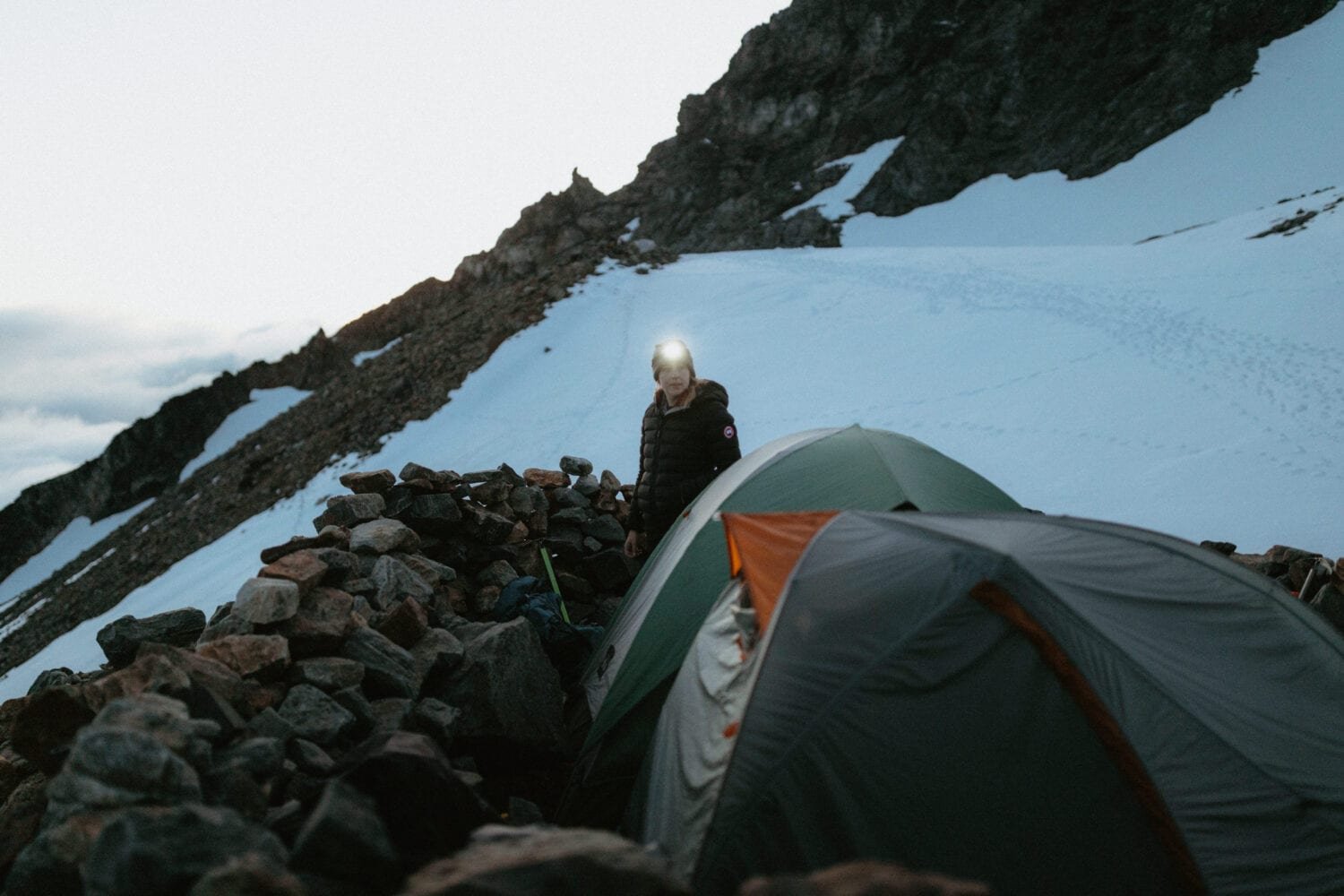
6. Tips On Peeing In The Outdoors
Camping hygiene habits for peeing in the backcountry are important for overall cleanliness, but also for preventing uncomfortable situations like rashes or infections.
If you’re a man, this is pretty straightforward.
If you’re a woman or you prefer to squat and pee, you can hold your balance against a tree trunk with one hand, and your pants off the ground with the other. Bring them to your knees to prevent as much backsplash as possible. No matter who you are, be sure you go at least 200ft away from your campsite and any freshwater sources to take your pee.
If you decide to use toilet paper or wet wipes, be sure you bring your DIY toss bag (like mentioned above) to pack it out! For wiping, you can alternatively use a bandana (and dry it out by attaching it to the outside of your backpack) or a reusable Kula cloth.
No tools? No problem! Use a smooth rock, or local leaves to get dry (Just make sure you know what kind of leaves they are!).
Peeing in an alpine environment? Watch out for mountain goats! These pesky creatures love the salt content in your pee, and they will rush over to dig up the area as soon as you leave. To help prevent them from ruining this fragile landscape, pee on a rock!
7. How To Poop In The Outdoors
We should first address the fact that pooping on a backpacking trip or camping trip can be awkward, especially if you do not know your group well. However, pooping is SO important for your overall health and comfort – it’s definitely not recommended to wait an entire week, or even a long weekend!
To clear the air, make a fun conversation about pooping before your trip so it’s less weird.
You can talk about what you’re bringing, swap tips, and make it a normal routine task in your mornings and evenings. This way, it’s a lot more comfortable to ask for help, extra toilet paper, or anything else you might need!
To align with proper Leave No Trace practices, be sure you are at least 200ft away from camp, trails, and freshwater before you go. Once you’ve chosen your spot, use a trowel to dig a cathole 6-8” deep and cover the hole with the removed dirt once you’re finished.
To be extra sure that nothing is going to get into it, cover your cathole with a couple of large rocks if they’re around.
If you brought toilet paper (even the biodegradable kind) or wet wipes to use to clean yourself up, make sure you bring a dedicated plastic bag to use to pack those out. Do not bury them!
If you don’t feel like packing the extra TP weight, you can use leaves or smooth stones instead. Another option? Bring a squeeze bottle filled with water to function as a DIY bidet and drip-dry after using.
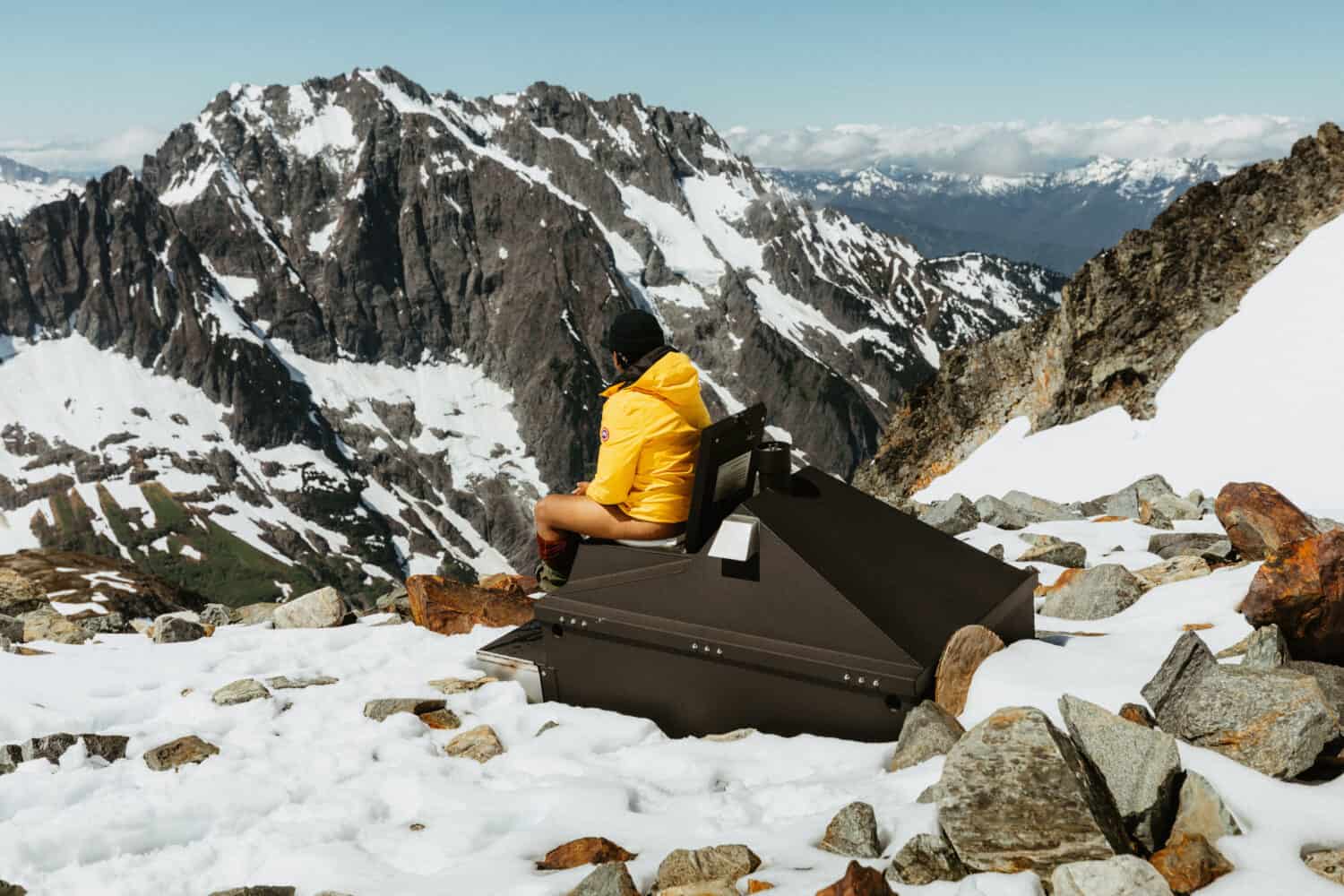
8. Bonus: Pooping In The Alpine Region
Climbing a mountain? You may find yourself up in high alpine environments and very cold temperatures. These areas require extra precautions when pooping because the cold temperatures prevent your poop from breaking down like they would at lower elevations.
Make sure you’re educated on the area you’re backpacking in and if there are any regulations like this in place!
Before your trip, call the park ranger’s office to ask about proper poop disposal in your specific location. If you’re lucky, there will be a compostable toilet in the area (like Berty is using above!).
Often, they will suggest bringing something like a Wag Bag, (also called Blue Bags) which are essentially plastic bags that you poop in and pack out with you.
You can also make your own wag bags by using the DIY Toss Bag method (scroll up to read that) and adding things like kitty litter or chemicals to solidify your waste and reduce the smell.
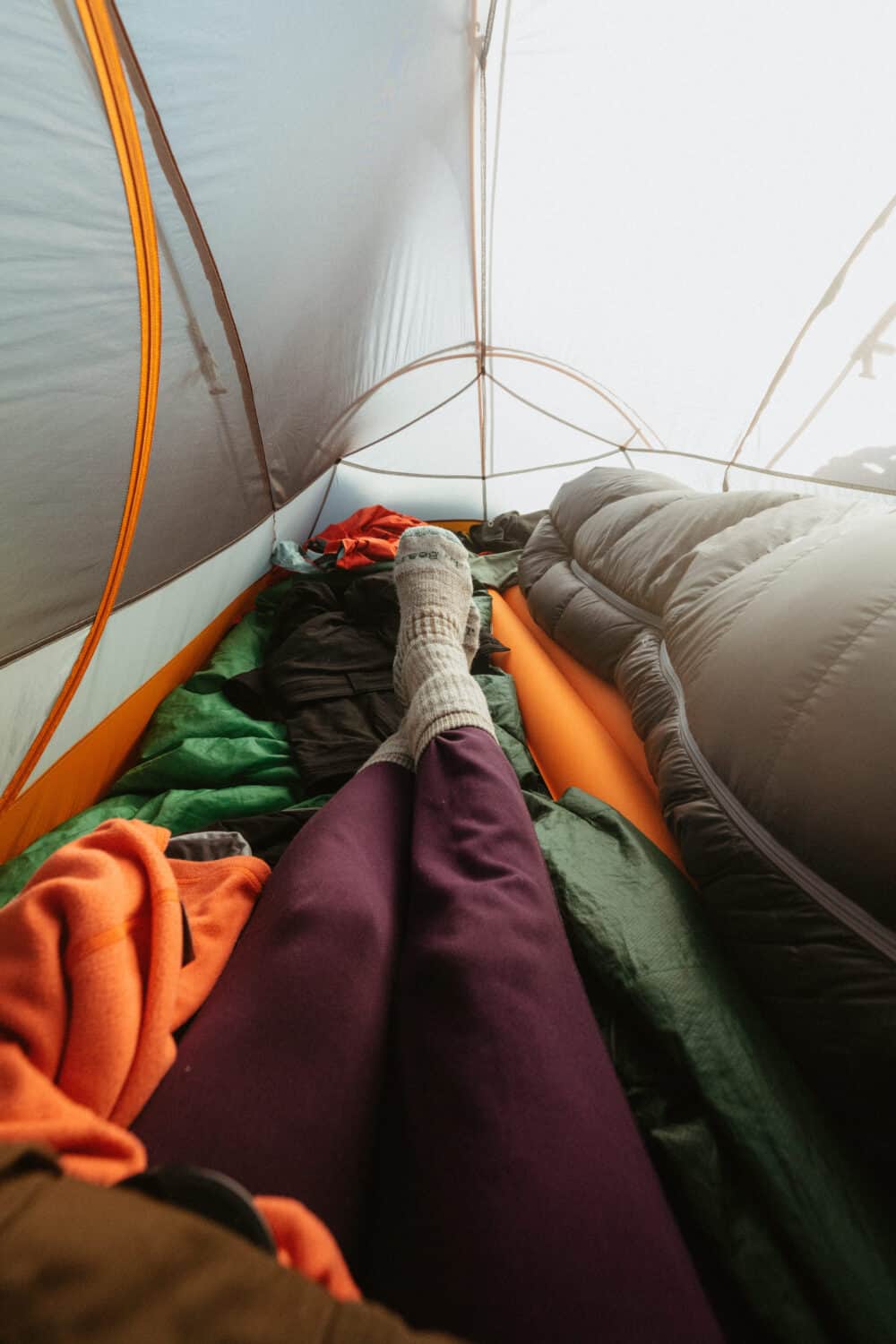
9. Pack A Pair of “Sleeping Only” Clothes
One super-easy way to stay clean on backpacking trips is to designate a pair of “sleeping only” clothing. These are often things like a warm pair of wool socks, a thermal layer set, and a lightweight fleece (read our backpacking gear list for sleeping gear suggestions!).
Sleeping clothes are important because it allows you to rest clean, without sitting in your own smell and bacteria for all hours of the night.
Sleeping clothes also help keep your sleeping bag clean, because sleeping bags are sometimes tough to wash if they get soiled! To keep your sleeping clothes as clean as possible, store them in your sleeping bag, or in a designated spot that never leaves your tent.
Read More: The 10 Best Sleeping Bags For Backpacking
Putting on your backpacking sleeping clothes should be the VERY last step of your camping hygiene routine! Make sure to take that baby wipe “bath”, go to the bathroom, and wash your hands before you change into them.
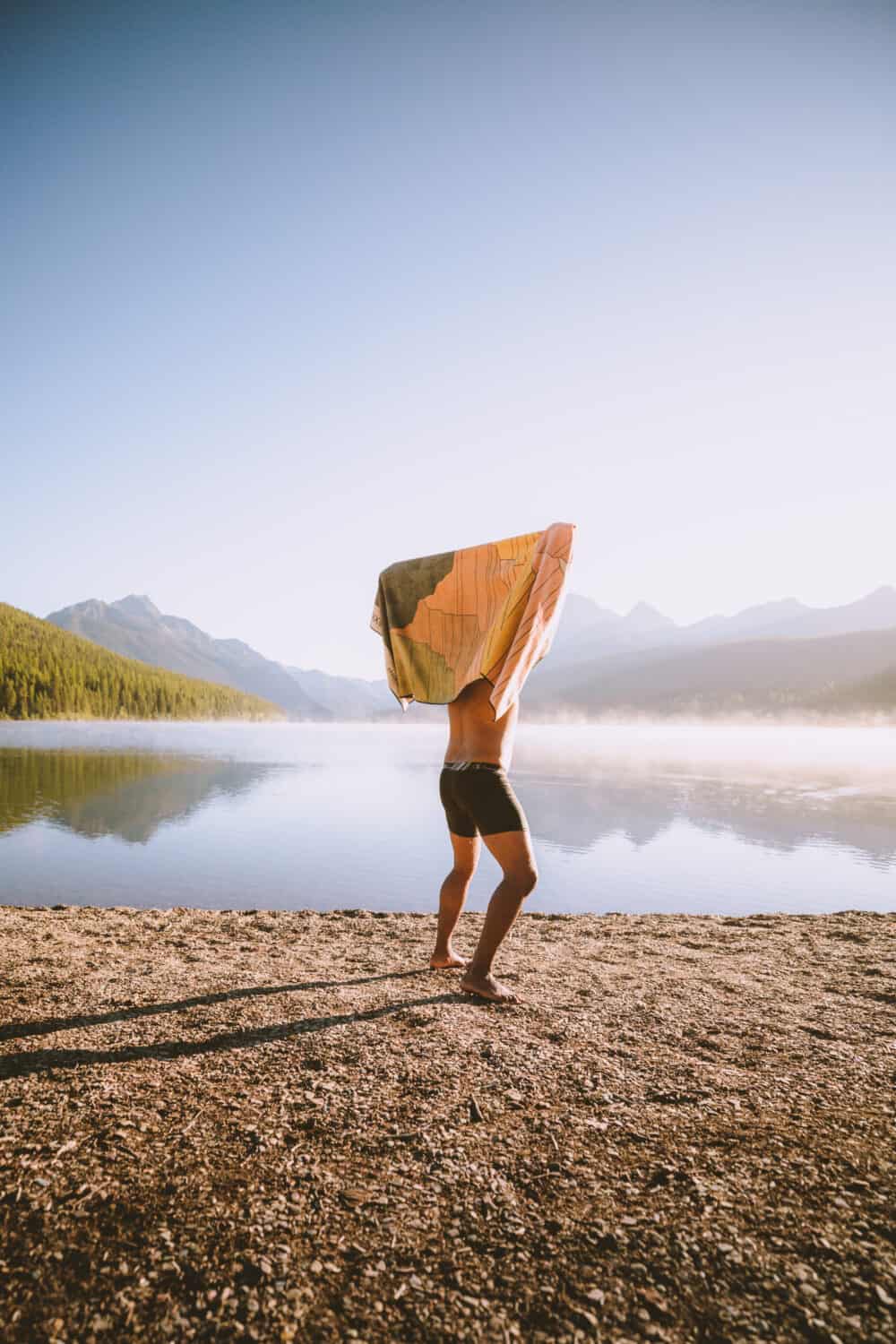
10. Change Your Underwear and Socks Often
If you’re anything like us, involuntary damp feet or a damp body (especially your groin area) feels super uncomfortable. For good outdoor hygiene, dryness should be a priority!
This is why we like to pack fresh pairs of socks and underwear to change routinely on our overnight outdoor adventures. It’s also essential that you get pairs that are of moisture-wicking material, like these ones from REI.
Depending on the length of your trip, we recommend packing enough pairs of socks and underwear for at least a fresh pair every other day. If you are taking a month-long backpacking trip (like a thru-hike), we recommend just packing a week’s worth of pairs, but an overnight trip only really requires 2 pairs of each.
When choosing what pairs to bring, make sure they are made of sweat-wicking material to help pull moisture off of your skin and keep you dry. You don’t need to get fancy, just pack literally anything besides cotton!
If you’re looking to invest in great backpacking underwear and socks, we love the brand Exofficio and Smartwool for excellent moisture-wicking options.
11. How To Manage Your Period On A Camping Trip
Periods during a backpacking trip is an extra factor that some folks must think about when gathering together a camping hygiene kit. However, it shouldn’t deter you from enjoying your time outdoors.
There are several period methods to use when backpacking, from pads to tampons, period underwear, and menstrual cups. Choose whichever method is most comfortable for you. If you choose to go with traditional menstrual products, cover a Ziploc bag in duct tape and add a little baking soda to neutralize the smell for packing out.
Menstrual Cup Pro Tip: Menstrual cups are great for backpacking because some can stay in for up to 12 hours! Make sure you give this a trial run or two before you take it into the backcountry. Inserting and using a menstrual cup can take some getting used to.
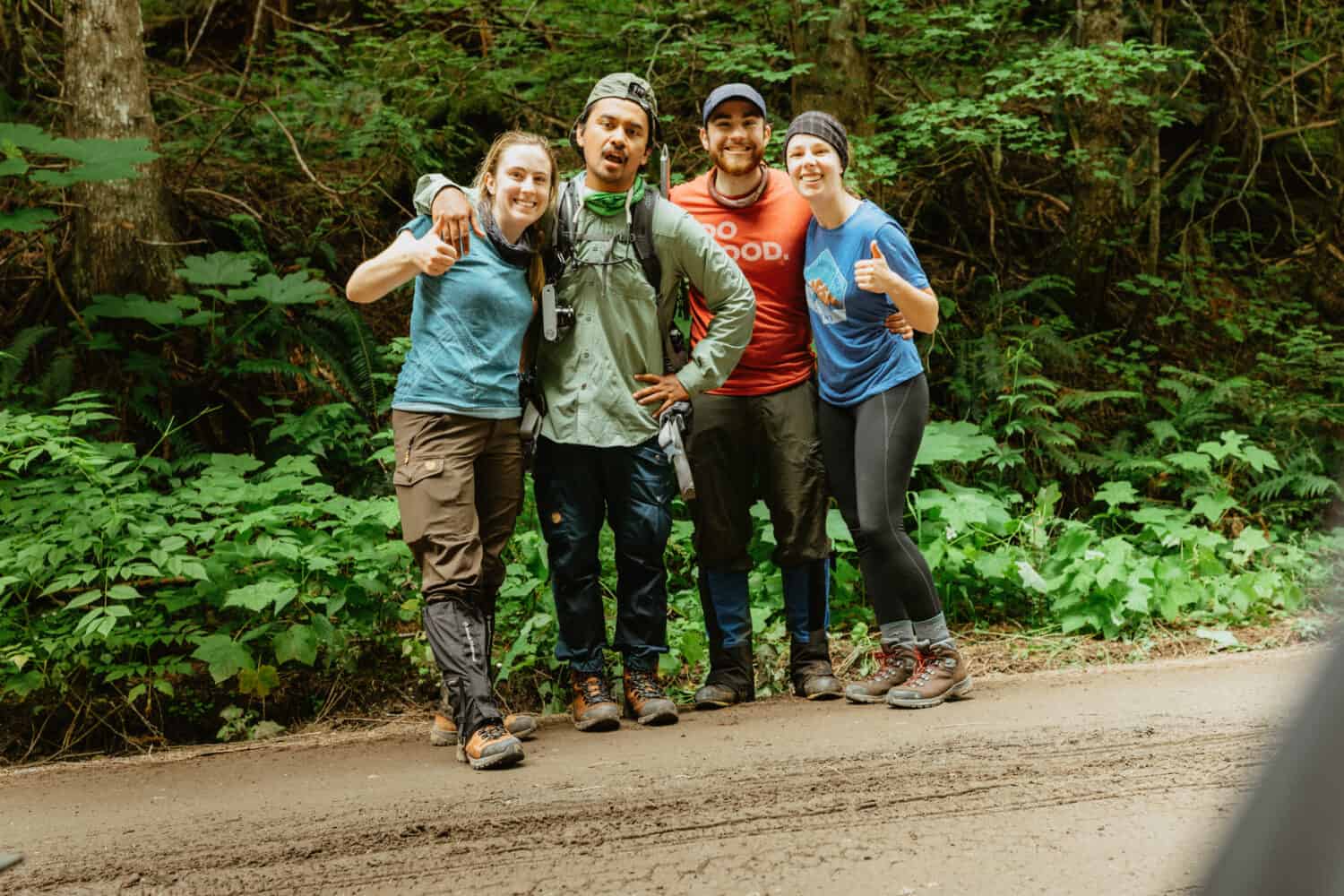
12. Tips On Washing Clothes On A Camping Trip
If you are needing to wash your clothes while backpacking, the most convenient way to do so is by toting along a lightweight wash bag. Here’s how to do it:
- Fill your bag with water, about 20-25% full
- Put a few drops of biodegradable soap in the bag.
- Add your dirty clothes and close the bag, with just enough air for things to get tossed around.
- Shuffle the bag! Shake it up, roll the clothes around with your hands, and get all the fabric fully immersed in the suds.
- Drain out the dirty water, well away from any water source or campsite – at least 200 feet away.
- Fill with water again for a ‘rinse cycle” and dispose of the water as you did with the used water.
- Wring out wet clothes, and hang to dry. Turn the wash bag inside out to dry as well. Camping hygiene on the go!
Don’t have time to wash your clothes? Sometimes washing your clothes on a backpacking trip isn’t really necessary, or convenient (this definitely applies to trips one week or less).
One way to extend your clothes as long as possible is to wear your shirts and pants (but not your underwear and socks) multiple days in a row, or until they are visibly soiled.
Don’t alternate between changes of clothes, but rather wear them until you absolutely feel the need to change. This gives you chances during your backpacking trip to feel fresh and clean, even in the last days of your trip.
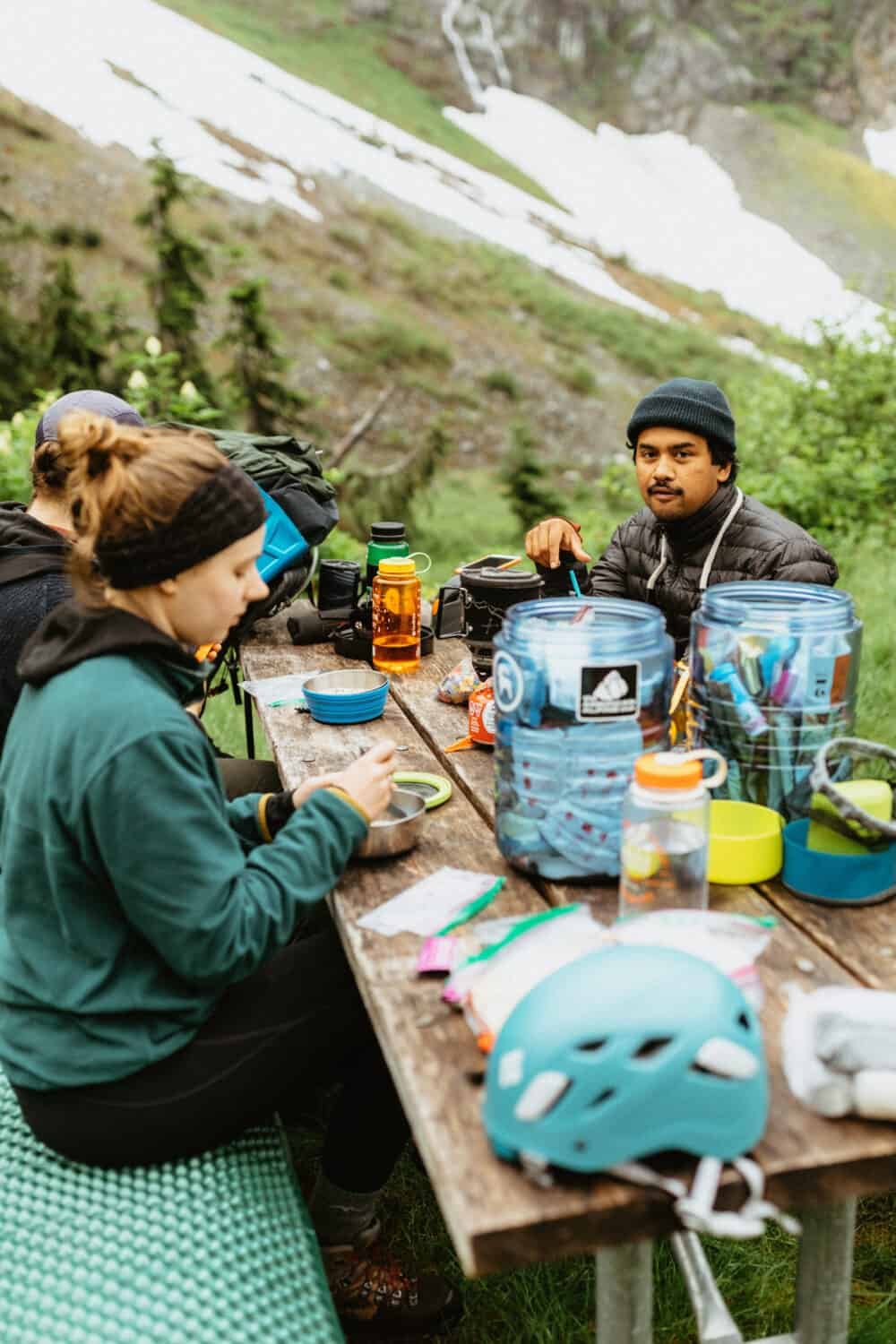
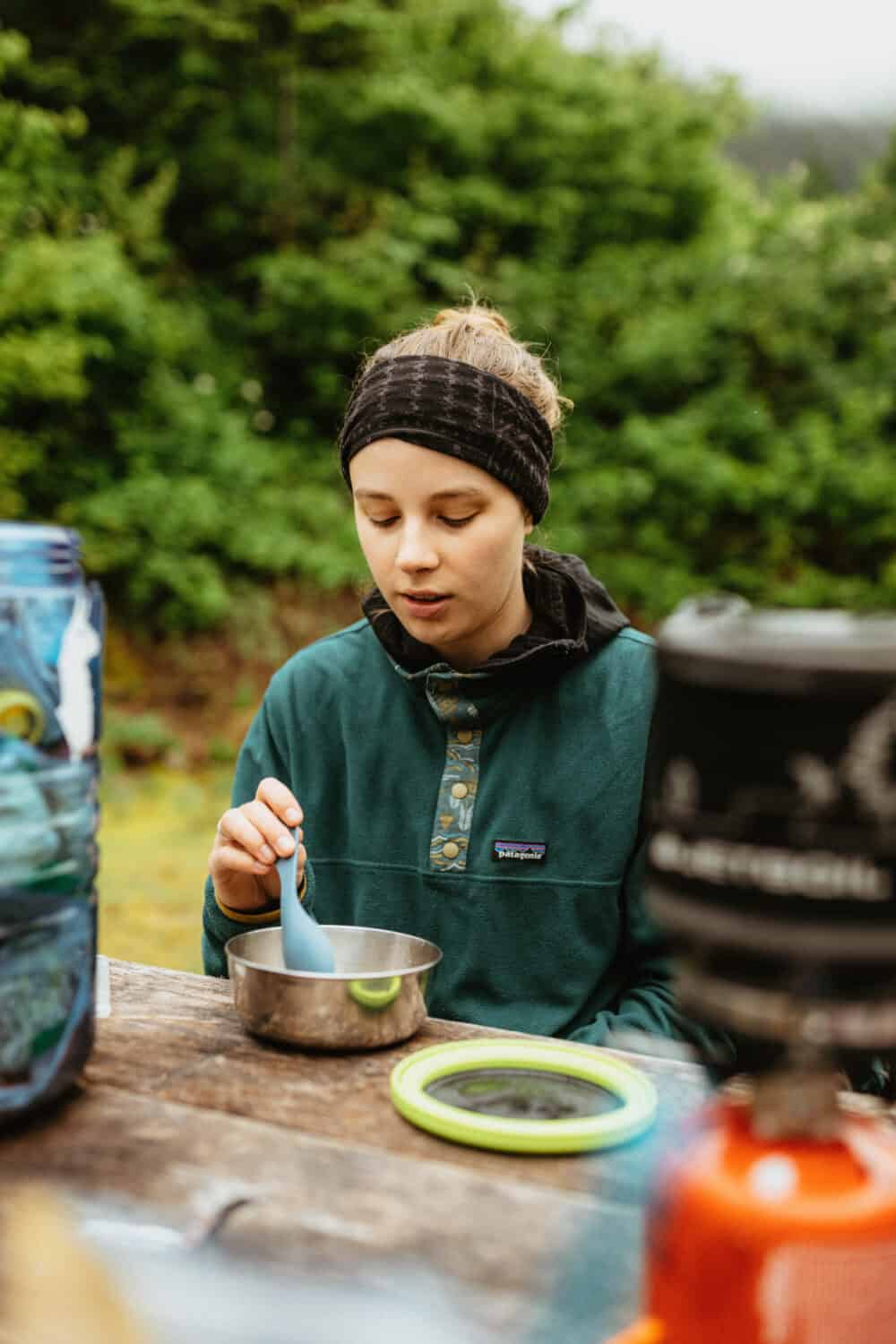
13. How To Do Your Dishes On A Backpacking Trip
Clean dishes and food prep tools are really important ways you can focus on backpacking hygiene and stay healthy during your next outdoor trip.
There are several ways to wash camping dishes, and each depends on your location, climate, and time of year. Here, we will talk about washing dishes while backpacking (specifically for one-bowl type meals):
Limit the amount of leftover food in your bowl. Have little bits left in the sides of your bowl? For OPTIMAL Leave No Trace practices, pour warm water in your bowl to break up the remaining food particles. Scrape them free with your fork and then drink it. Yep, drink your greywater. If you think about it, it’s just your last meal with a little water – you can handle it.
Dab the tiniest bit of soap into your bowl. Boil some water, and pour hot water into your bowl. Be careful not to burn yourself! Clean your bowl with your spoon, also while cleaning the spoon. In the alpine? Opt-out of the soap and just use boiling water to clean your dishes!
To dispose of your water, dump it away from your campsite. You can dig a tiny cathole and pour all of the water into one place, and they bury it to deter animals from the smell. Alternatively, you could take your small bowl of water and windmill it, spraying wide. This depends on your landscape, and what is recommended by the local rangers.
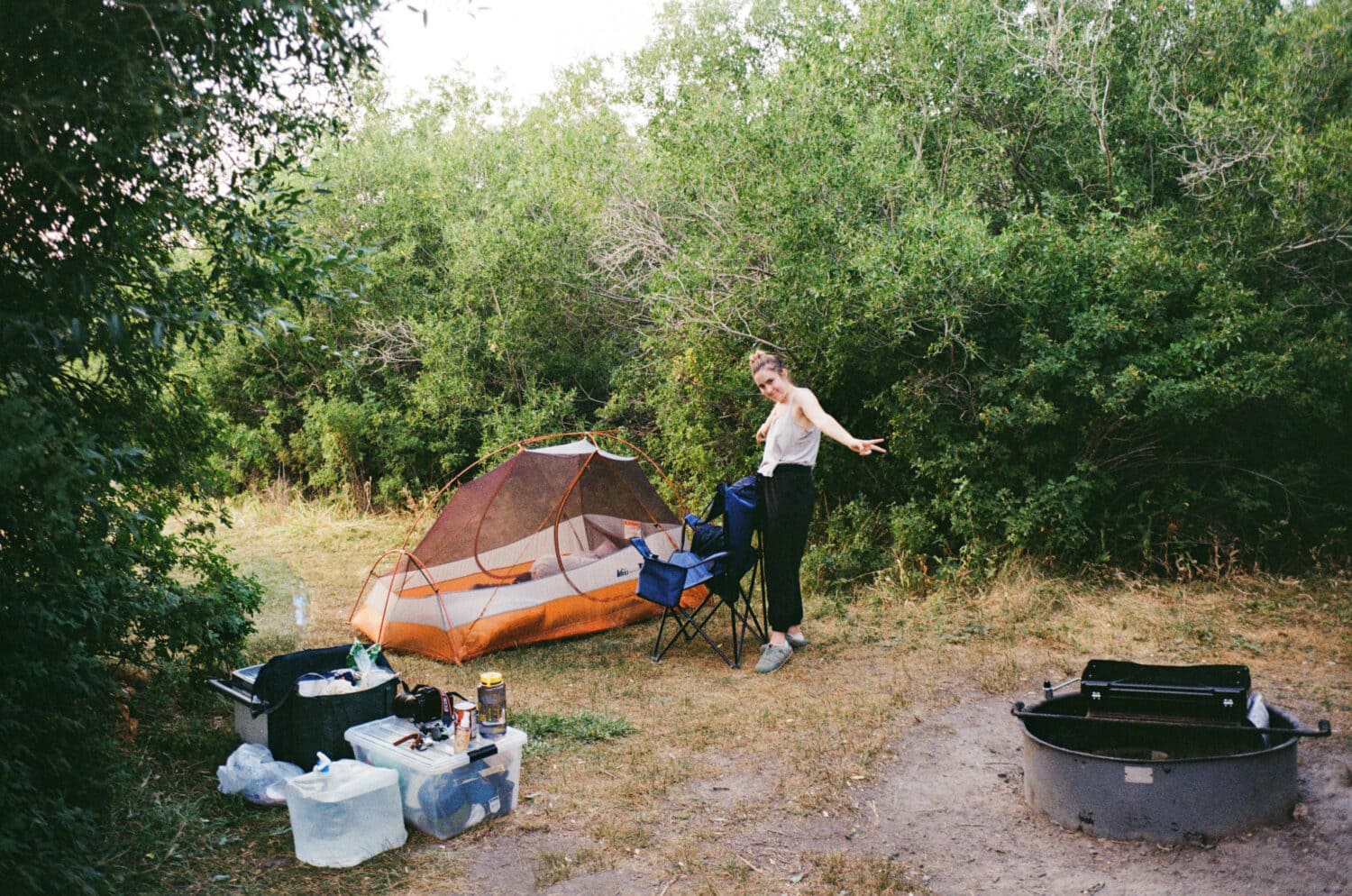
14. How To Wash Your Face On A Camping Trip
Skincare is one of my favorite ways to practice self-care, and that doesn’t have to stop when I’m on a backpacking trip! One of my favorite parts of my camping hygiene routine is caring for my skin and keeping it clean!
For a backpacking skincare routine, try and pair it down to the bare essentials. Face wash, moisturizer, and sunscreen.
Facewash: The most Leave No Trace friendly option is to use wipes, and pack them out. I really like the Ursa Major face wipes, which have some active ingredients in them to fight dirt and grime, specifically for the face.
Moisturizer: The gentlest formula that generally works for all skin types is from CeraVe ($5.49). This is a lightweight formula with Hyaluronic Acid, which keeps extra moisture locked into your skin – essential if you’re backpacking in the alpine or other harsh conditions!
Sunscreen: Sunscreen is important to wear every day, but the necessity is amplified when you are up in high altitudes! Pack one with a high SPF, and try and always keep it in your pocket for easy access!
Camping Hygiene Conclusion
Outdoor hygiene can seem like a bit of an oxymoron to anyone just starting out in outdoor adventure.
You might be a bit uncomfortable on your first trip or two as you figure out what works best for you – it will take some time and getting used to.
But hopefully, with this list, you know what to pack and how to prepare so you can set yourself up for success!
What are some of your favorite camping hygiene tips? Share your tips on staying clean while camping in the comments below!
